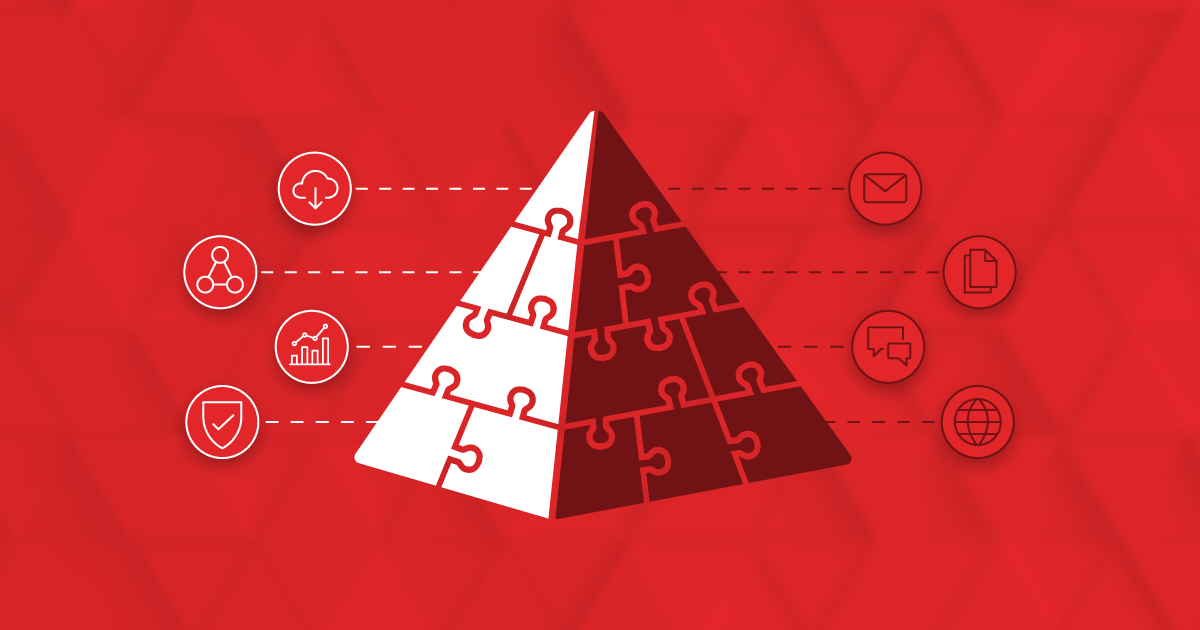
Portfolio Management is a critical tool as companies pivot to meet the demands of accelerating digital transformations.
By Ann Tofolo
The world is changing right before our eyes: digital transformations are accelerating, companies are pivoting to meet unforeseen challenges, teams are learning a new way of working together as Work from Home (WFH) becomes the standard. These challenges mean your organization is leveraging more cross-functional teams to deploy its strategic, enterprise-level projects more quickly. To effectively execute at the enterprise-level with current market conditions, companies (and their people) need to understand:
- How each project supports the organization’s strategic objectives.
- How project demands (resource needs) can meet the organization’s supply (resource availability).
- Why some projects are successful while others fail.
Enterprise Project Portfolio Management is a critical tool to help company leadership navigate these challenges.
Project Portfolio Management (PPM) was born in IT departments to provide IT leadership with the ability to prioritize and govern their projects. PPM inspired Enterprise Project Portfolio Management (EPPM), which empowers the C-Suite and executive leaders with the same capabilities for their enterprise-wide initiatives. But it’s not only valuable for IT anymore, and it isn’t a CIO problem anymore – it’s a Senior Leadership Team’s responsibility.
By embracing the EPPM methodology, you can better focus your team’s efforts on the highest value work, manage that work more efficiently and drive your company strategy forward.
Enterprise Portfolio Management Explained
What is “Enterprise Portfolio Management”? It is a project prioritization and delivery process that empowers executives with the metrics and insights to effectively focus enterprise resources on the highest value work. Portfolio Management has been used by technology teams for decades to focus resources on the high-value work. Enterprise Portfolio Management applies those same concepts to your enterprise-level initiatives.
As an executive, EPPM allows you to measure how much projects support your organization’s objectives, understand dependencies (and possible collisions) between enterprise projects, and forecast the workload for your teams. Imagine you are the VP of Operations for Company ABC. Once a month, you could participate in your company’s EPPM – perhaps you could review a dashboard of metrics on current projects to gain visibility of potential future resource demands. Additionally, you would participate in ranking new projects based on your current objectives and the organization’s strategy. Most importantly, you would have a detailed understanding of how your organization is executing against its goals.
Reasons to Create an Enterprise Project Portfolio
1. Improved Project Financial Management
Over 25% of the annual GDP of developed countries is spent on or in projects. From a dollars perspective alone, this is a compelling reason for EPPM. Proper financial management has always been a core focus of IT Project Portfolio Management – constantly assessing a project’s return on investment. For EPPM, this responsibility is even greater because enterprise projects often exceed an IT project’s budget, leaving a broader impact across an organization, and a more esoteric potential return on investment. Think HR initiatives to create culture change or adopting a SAFe Agile methodology. EPPM creates a consistent method for assessing a project’s financial health, anticipating future spending, and giving you insight into project costs and forecasted benefits. A critical component of successful EPPM financial management is communication. If your Enterprise Project Portfolio Management Office (EPMO) has an incomplete view of the portfolio’s spend to date, or forecast to complete, or doesn’t have an understanding of the financial impacts of a project risk; your financial analysis of the portfolio becomes meaningless. Clear communication and transparency from the project teams is an absolute must, and the EPMO must create the vehicle for this communication to happen. By defining project reporting standards and cadence to be used across all enterprise initiatives, you will be better able to assess project financial health.2. Understand Alignment to Strategic Objectives
To supplement the sometimes-elusive measurement of ROI, EPPM utilizes tools like Strategic Objective Alignment to help determine which projects move forward.
A compelling reason for this type of assessment comes from Network World:
“For the enterprise, an unforeseen byproduct [of COVID19] is an even greater urgency for agility, adaptability and transformation. Business models are being disrupted while the digitalization of the economy is accelerating as new technologies and services serve a reshaped workforce.”
As organizations today try to pivot to embrace the “new normal,” those with an EPPM in place will find themselves better positioned to identify and implement new strategies.
As CIO.com reports, “If a PMO or EPMO does not have a strategic plan that aligns with overall operational goals, then projects are at risk of wasting resources and time, and are unlikely to produce deliverables.”
Defining a new strategy for your organization based on a disrupted business model does not always have an easily measurable ROI. You may not be able to reduce your workforce or recognize immediate cost savings, but the change in strategy is necessary to survive in the current environment. This is where the ability to measure how much a potential project supports your new strategy becomes valuable and can help with critical decisions on where to invest your valuable resources.
Measurement doesn’t need to be overly complicated. Ask yourself:
- What are our strategic objectives?
- How important (relative to each other) is each objective?
- Assign each objective a point based on relative importance to each other, with the most important driver receiving the most points and least important driver receiving the lowest number of points.
- Now ask which driver(s) does each project support?
- Give the project the points associated with that driver.
This will give you a ranked list of projects based on your strategic objectives. You then know which projects are the most strategically valuable. According to the Project Management Institute’s 2017 survey “[Organizations] that align their EPMO to strategy report 38 percent more projects meet their original goals and business intent and 33 percent fewer projects are deemed failures.”
3. Align Resources to the Most Critical Work
One of the most common reasons projects fail is the lack of needed resources. This isn’t always immediately apparent to the casual observer, however. There may be people assigned to fill the required roles, but the problem is actually that those people don’t have time to fulfill their project duties. It’s a common problem.
For example, say a project needs a Purchasing team member to help define requirements for that team. The most experienced resource on the team is assigned to fill the role. However, none of her other duties are delegated, so she is required to fulfill the project needs in addition to her full-time position duties. What commonly happens is the project slows down because she isn’t available when needed, the requirements are only half-way thought through because she didn’t have time to focus on them, the new SOPs are not written, and the team doesn’t embrace the new process. She then gets burned out and frustrated because she is overwhelmed and the project is delivered, late and over budget. Then the needs of the Purchasing group are not met, so the promised benefits of the project are never achieved. Sound familiar?
Another key benefit of EPPM is that it enables organizations to gauge enterprise project resource needs against the organizational capacity to determine what resources are needed to enable which projects to continue. By analyzing team workload and available capacity, EPPM can help organizations understand where constraints need to be alleviated, work assignments shifted, or a flexible staffing model implemented. Alignment of resources also enables an organization to plan for future initiatives by forecasting skills and resource needs before starting a strategic initiative so that resources can be sourced, on-boarded and ready when project work begins.
Of course, this resource management function cannot happen in a vacuum. The EPMO must work closely with executive leadership and team managers to understand team capacity and options for meeting project demands. Typically, managers do not have idle resources just waiting for new work assignments, and so capacity vs. demand management requires constant collaboration and negotiation. Again, communication is key. For the EPMO to accurately forecast organizational capacity, they must be in constant communication with team managers.
4. Governance and a Common Methodology
Enterprise project portfolio governance empowers senior executives to make critical decisions and provide guidance to enterprise initiatives. By following a structured governance process, and using a common set of metrics, executives can review project status and issues and risks, and make more informed decisions to enable these projects to move forward. When the projects follow a defined methodology, executives can compare project progression against other enterprise initiatives and better forecast resource needs. No two projects are exactly alike, but the EPPM’s responsibility is to make sure executives have a common set of metrics to make better decisions.
Typical enterprise project portfolio governance responsibilities include:
- Aligning initiatives with enterprise strategy
- Prioritizing projects based on strategic objectives
- Approving projects and project budgets
- Championing projects and addressing operational issues or resource constraints
- Approving and monitoring progress on enterprise-level issue or risk mitigation plans
- Issue escalation/resolution and accountability
- Resource planning for upcoming project demand
5. Improved Communication
Of course, all this measurement and governance becomes much less powerful without a vehicle for communicating with the organization. For any Enterprise Project Portfolio Management team to be successful, communication is key. A regular cadence of portfolio metrics should be shared with the entire organization to keep them informed of shifting priorities, potential issues, and to celebrate project successes. Governance without communication can quickly create a downward spiral for company culture.
Particularly during times of disruption or significant strategic shifts, transparency, even when the news isn’t always positive and rosy, will help to keep employees engaged and build employee morale. By managing enterprise initiatives as a portfolio, rather than a series of stand-alone projects, and sharing the status of the portfolio, EPPM can help employees participate in the “big picture” and gain a better understanding of where their organization is headed. Metrics from the portfolio can showcase the organization’s ability to execute complex initiatives and can also be shared with partners, vendors, the Board of Directors and customers.
According to Gartner, “Digital disruption has moved from an infrequent inconvenience to a consistent stream of change that’s redefining markets and industries.“ As companies look for strategies to address this constant disruption, Enterprise Project Portfolio Management is seen as a solution to keep valuable company resources aligned to the most strategic work and to provide the oversight and governance to maximize project benefits.


